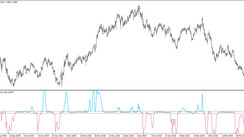This morning, the RBNZ raised the interest rate by 0.50% as expected, bringing it to 2.05%. The accompanying RBNZ statement said: "The committee agreed that it remains prudent to continue to tighten monetary conditions at the pace necessary to maintain price stability and support maximum sustainable employment." It also stated that “the committee recognized that there is a risk of higher consumer price inflation in the near term, and risks of slower economic activity in the medium term”, but “decided to continue to raise the OCR (official monetary rate) to a level at which it is confident that consumer price inflation settles within the target range." The RBNZ acknowledged that a sharp rise in consumer prices is possible in the short term, as the situation in the energy market remains highly uncertain (currently, the inflation rate is 6.9%, which is an absolute maximum in 30 years).
Economists predict that by the end of 2022 the RBNZ interest rate could be raised to 3.5%, and to 4% by 2024.
The New Zealand dollar and the NZD/USD pair reacted rather reservedly to this rather tough RBNZ decision, perhaps because it was expected.
In general, since the beginning of today's trading day, most of the major dollar currency pairs have been trading in a narrow range, remaining under pressure from the US dollar. It continues to dominate the market, receiving support from the Fed, which is pursuing the tightest monetary policy (at the moment) in comparison with other major world central banks.
The dollar is also in strong demand as a defensive asset in the face of geopolitical and economic uncertainty, as well as against the backdrop of a growing divergence of curves reflecting the yields of major US and most other (other economically developed countries) government bonds. If it (yield) grows, then the dollar will continue to strengthen. The increase in the yield of US bonds is promoted, in turn, by the Fed's monetary policy, which tends to tighten further.
American strategic investors in this situation prefer the rising dollar to US government bonds, which currently bring (10-year bonds) 2.961% per annum. But foreign investors choosing between US government bonds and government bonds of national economies choose American ones as more profitable.
The purchase of American government bonds (and other assets of the US stock market) is made in dollars, and the purchase of the dollar for the national currencies of other countries contributes to the natural strengthening of the dollar against them.

If you look at the chart of the DXY dollar index, you can see that since March 2011 it has been in a stable long-term uptrend, and on Tuesday it updated another multi-year local maximum at 108.42. Its breakdown will be a signal to increase long positions in DXY futures with the prospect of growth towards multi-year highs of 121.29 and 129.05, reached, respectively, in June 2001 and November 1985.





